Jonathan Erdman
The 2020 Atlantic hurricane season smashed several all-time records, but some of its most startling statistics go well beyond the number of named storms and hurricanes.
To be sure, 30 named storms in one season – most in any season dating to the mid-19th century – is a record we might not see broken any time soon. That's also hopefully true of the record 11 storms to landfall in the mainland U.S. in 2020.
Monday, the National Hurricane Center hosted a webinar during which they discussed key takeaways from the 2020 season.
During the webinar, NHC Director Ken Graham and National Weather Service-Lake Charles, Louisiana, Warning Coordination Meteorologist Roger Erickson presented some eye-popping perspective.
The following is just a sampling of what they discussed.
1. Over 600 Forecasts
When a tropical depression, storm or hurricane is active, the NHC issues forecasts every six hours.
In 2020, the NHC issued 639 forecast advisory packages for the 30 named Atlantic storms, and also for Tropical Depression Ten.
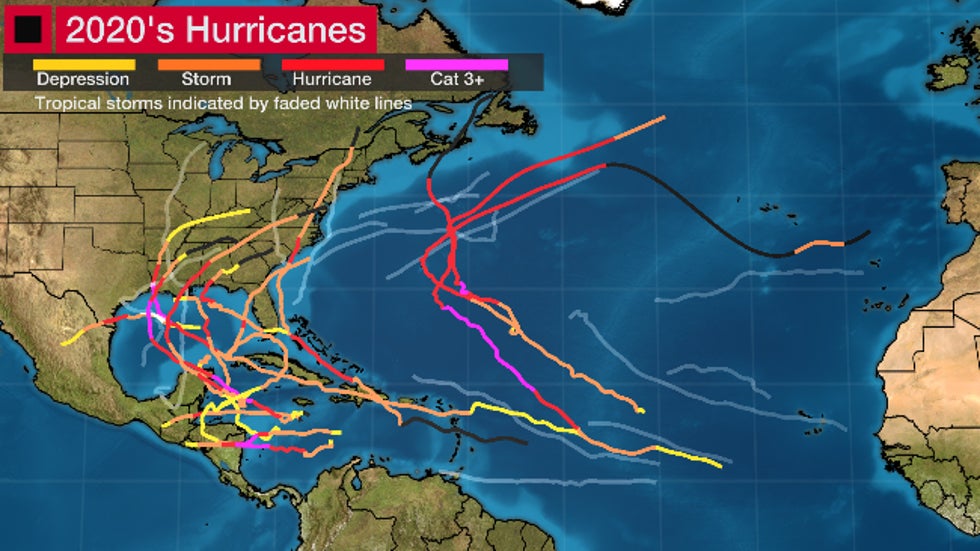 Tracks of the 14 hurricanes in the 2020 Atlantic hurricane season, color-coded by intensity, as well as the other 16 storms which never became hurricanes, shown as grayed-out tracks.
Tracks of the 14 hurricanes in the 2020 Atlantic hurricane season, color-coded by intensity, as well as the other 16 storms which never became hurricanes, shown as grayed-out tracks.Graham said this was roughly double the 322 forecast advisories in an average Atlantic season.
However, the NHC also has forecast responsibility for eastern Pacific tropical cyclones. While it wasn't a particularly active season in that basin, they also issued 316 forecast advisory packages for 16 eastern Pacific named storms and five tropical depressions.
2. From Texas to Maine
Hurricane, tropical storm or storm surge watches or warnings blanketed the entire Gulf and East coasts from Texas to Maine in 2020. Only a few coastal counties near Florida's Apalachee Bay weren't covered by either a tropical storm or hurricane watch or warning.
Graham said coastal hurricane warnings were in effect along the U.S. Atlantic coast for a combined 378 hours – almost 16 full days – in the 2020 season.
In Louisiana alone, coastal watches and warnings were in effect for a staggering 474 hours, or just shy of 20 days, according to Graham.
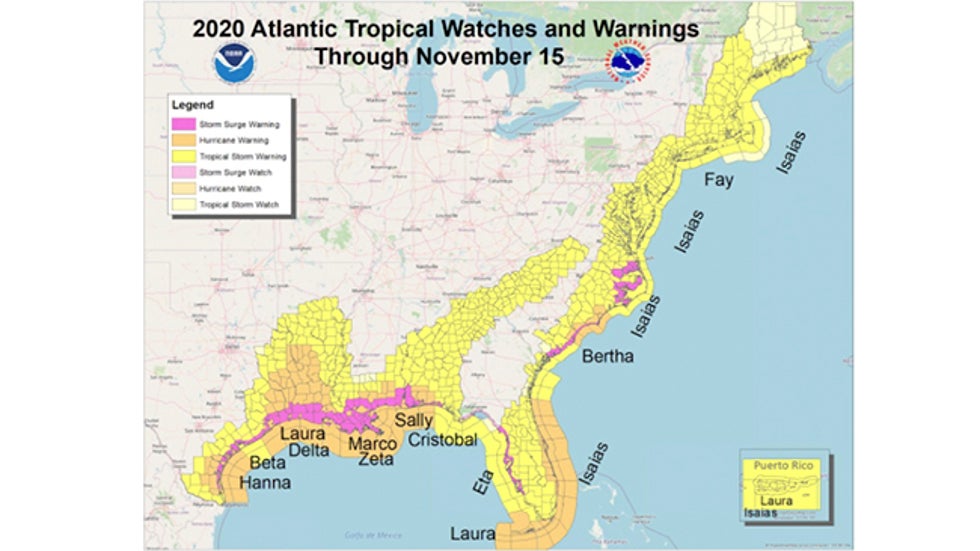 Extent of storm surge, hurricane and tropical storm watches and warnings along the Gulf Coast and East Coast in 2020.
Extent of storm surge, hurricane and tropical storm watches and warnings along the Gulf Coast and East Coast in 2020.3. Hurricane Hunters Were Also Busy
Hurricane hunter missions were flown into 20 of the 30 Atlantic named storms in 2020, according to Warren Madden, the chief reconnaissance coordinator at the NHC.
Madden told weather.com the U.S. Air Force Reserve's 53rd Weather Reconnaissance Squadron and NOAA's Hurricane Hunters flew a combined 223 missions in 2020.
Including both storm missions and deployments to operating bases such as St. Croix and Hawaii to be nearer to storms, the 53rd WRS and NOAA racked up 1,950 flight hours, the fourth most in any hurricane season since 1966, according to Madden.
NOAA's share of that – 681 hours – topped their previous record from 2005, and more than doubled flight time in an average season, according to Graham.
Madden said missions were flown as far east as Bermuda, as far west as Hawaii, as far south as near Trinidad and Tobago and as far north as off the coast of Nova Scotia.
If that wasn't enough, the 53rd WRS had to evacuate aircraft from Keesler Air Force Base near Biloxi, Mississippi, four different times since they were in the potential paths of hurricanes such as Delta and Zeta.
And this all happened during a pandemic.
4. Zero Deaths From Laura's Surge
Hurricane Laura pushed a storm surge up to 18 feet above ground level into southwestern Louisiana near the communities of Oak Grove, Creole and Grand Chenier. This was one of the highest readings on record in Louisiana.
Graham pointed out just a subtle jog in Laura's track 20 miles farther west would have driven a 10- to 15-foot higher inundation into Holly Beach, Louisiana, and could have pushed a 5- to 10-foot higher surge northward up the Calcasieu River into parts of Lake Charles.
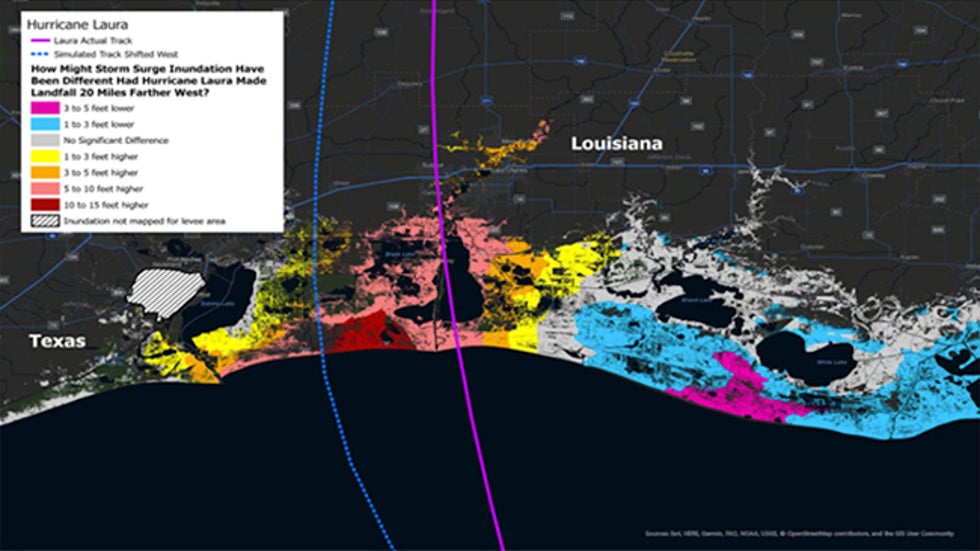 The potential difference in storm surge inundation (in feet higher or lower) of an alternative track of Hurricane Laura (blue dashed line) 20 miles west of the actual track (solid pink line).
The potential difference in storm surge inundation (in feet higher or lower) of an alternative track of Hurricane Laura (blue dashed line) 20 miles west of the actual track (solid pink line).To help accelerate an initial slow pace of evacuations, the NHC began referring to the storm surge as "unsurvivable" in their forecast packages before Laura's landfall.
But the pace of evacuations quickened once the public learned the NWS office south of downtown Lake Charles evacuated its staff, said Roger Erickson, warning coordination meteorologist in Monday's webinar.
Erickson said neighboring NWS offices in Brownsville, Texas, Houston, Slidell, Louisiana, and Tampa helped provide backup support for about a month while the office was vacant.
Remarkably, no deaths were attributed to the storm surge from Laura.
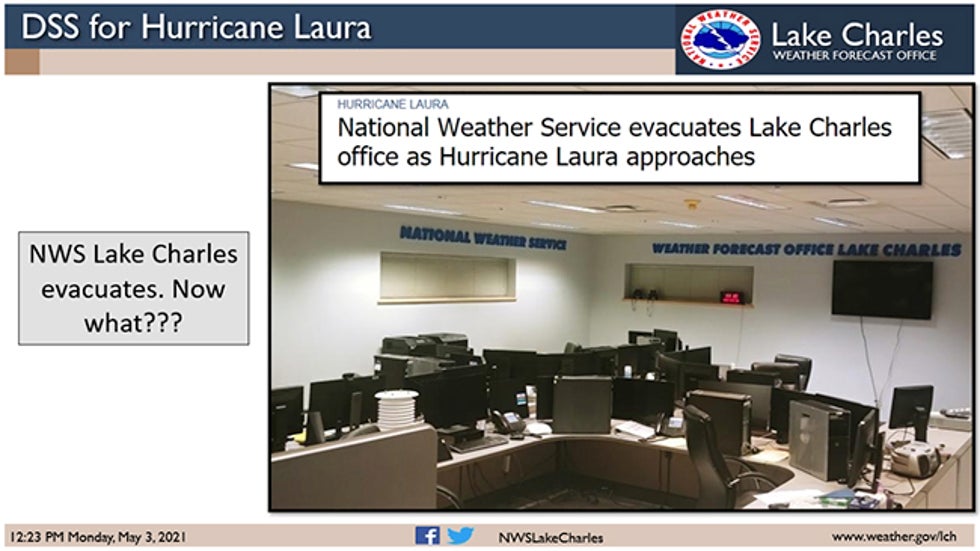 Photo of the National Weather Service office in Lake Charles, Louisiana, after staff was evacuated before Hurricane Laura in August 2020.
Photo of the National Weather Service office in Lake Charles, Louisiana, after staff was evacuated before Hurricane Laura in August 2020.5. 100-Plus-MPH Gusts Well Inland
In the webinar, Erickson presented a map illustrating how far inland Hurricane Laura's intense winds pushed into Louisiana.
According to this analysis, Erickson said wind gusts of at least 115 mph penetrated 95 miles inland to the town of Leesville. Wind gusts up to 86 mph were measured in Alexandria, Louisiana.
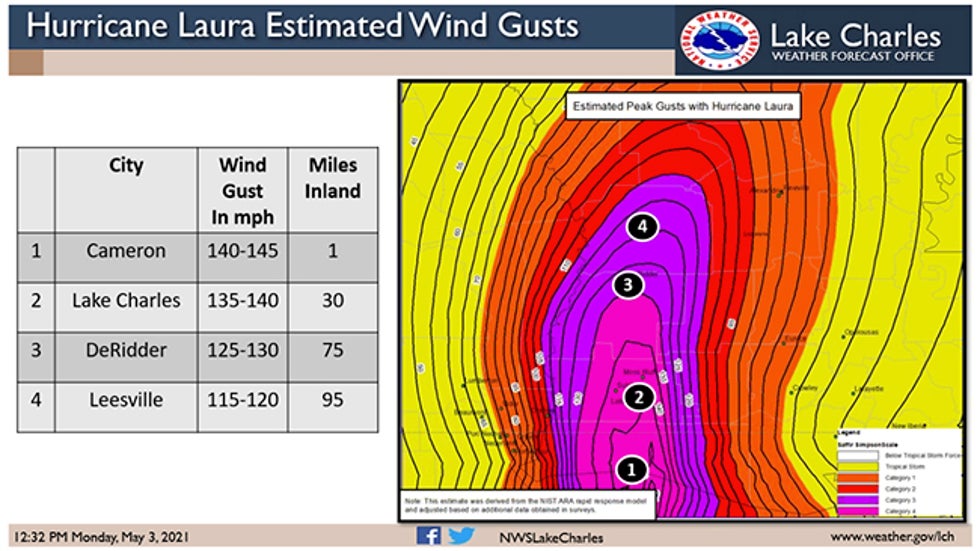 A wind analysis from Hurricane Laura in western Louisiana, with sample estimated peak gusts.
A wind analysis from Hurricane Laura in western Louisiana, with sample estimated peak gusts.This is a good case illustrating that hurricanes and tropical storms aren't simply coastal events. Large, fast-moving, intense hurricanes can spread damaging winds hundreds of miles inland.
Laura shredded the NWS Lake Charles Doppler radar, which was then rebuilt two months ahead of schedule at a cost of $1.65 million. Weather instruments measuring temperature, wind and rainfall known as ASOS were also damaged after recording a 133 mph wind gust at the site, though the main NWS forecast office building received little damage.
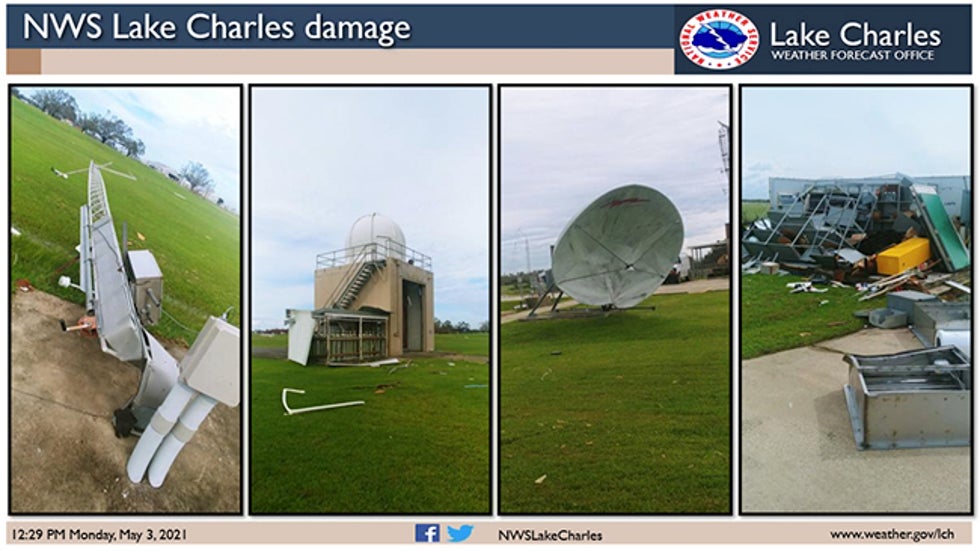 Damage at the NWS-Lake Charles office from Hurricane Laura.
Damage at the NWS-Lake Charles office from Hurricane Laura.Lake Charles is still struggling in its recovery after wind gusts up to 140 mph damaged homes across the area. The city estimates about 3,000 residents remain displaced more than eight months after the hurricane, the Advocate reported.
6. Aftermath Deadlier Than Storm Itself
Perhaps the most jarring perspective in the webinar regarded indirect fatalities – deaths that happen after a storm is over, not directly caused by the storm's surge, winds or flooding.
According to Graham, Hurricane Laura claimed seven lives in the U.S. directly from its wind or rip currents.
However, 34 deaths occurred in Laura's aftermath – 16 from carbon monoxide poisoning resulting from the use of generators in poorly ventilated areas to provide backup electricity.
Graham noted for the entire 2020 hurricane season, 46 were killed in the U.S. directly from a tropical storm or hurricane, but another 51 died in storm aftermath, according to preliminary data.
"In the last four years, we've lost more people to carbon monoxide poisoning after a storm than we have storm surge," Graham said. Only seven have died in the U.S. from storm surge since 2017, typically the most prolific killer in hurricanes and tropical storms.
A 2016 study found an average of 36 U.S. deaths occurred in storm aftermath of each hurricane season.
Laura was just one example illustrating the danger from hurricanes and tropical storms doesn't end once the storm has passed.
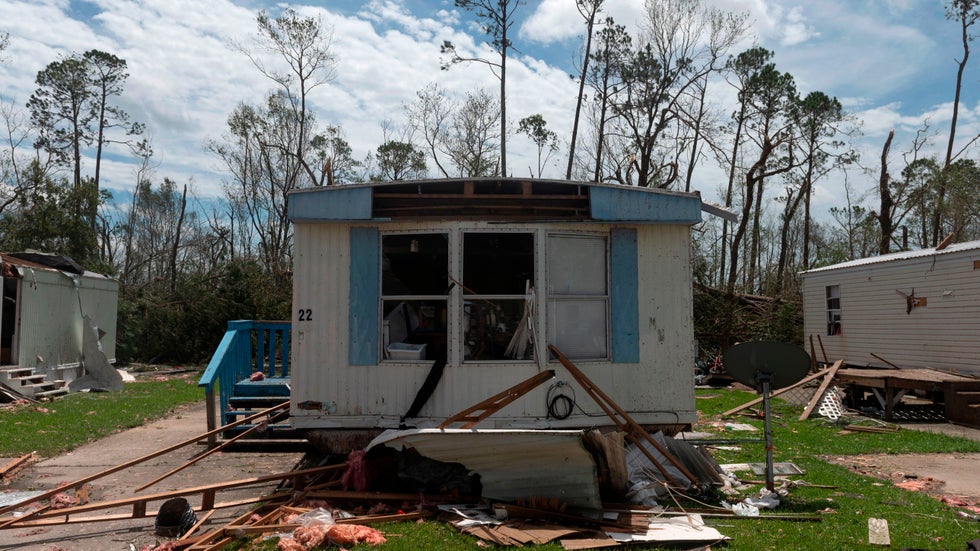 A damaged mobile home is seen following the passing of Hurricane Laura in Lake Charles, Louisiana, on Aug. 27, 2020.
A damaged mobile home is seen following the passing of Hurricane Laura in Lake Charles, Louisiana, on Aug. 27, 2020.The Weather Company’s primary journalistic mission is to report on breaking weather news, the environment and the importance of science to our lives. This story does not necessarily represent the position of our parent company, IBM.
The Weather Company’s primary journalistic mission is to report on breaking weather news, the environment and the importance of science to our lives. This story does not necessarily represent the position of our parent company, IBM.

No comments:
Post a Comment